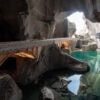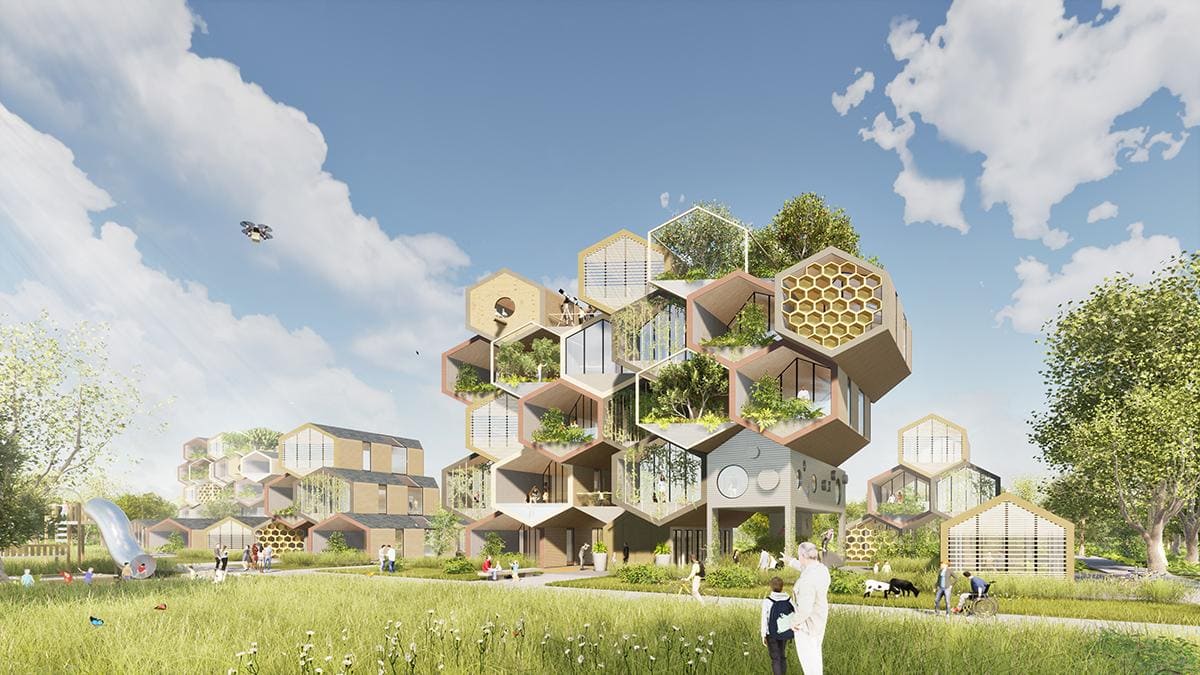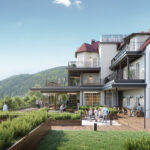Architect Gianluca Santosuosso asked himself, “How would nature respond to this brief?” – and turned to a beehive as a model for residential housing. His “HIVE Project” tackles current challenges with a completely new approach that benefits humans, animals and plants collectively.
Nature constantly strives for efficiency. During slow evolutionary cycles, beautiful things have always emerged that ensure survival through adaptation. Humans, on the other hand, are bursting with ideas, but often wreak havoc when implementing them. It has long been clear that we need to rethink our ways. This has motivated Italian architect Gianluca Santosuosso to seek out solutions that merge nature’s efficiency with human ingenuity. He had already pursued this lofty goal with his self-sufficient, floating residential “HYPERcay” complex. Now, this architectural visionary presents his next inspiring idea: the “HIVE Project”, which uses a beehive as a model for residential housing.
A hybrid of honeycomb and house
The project combines the attributes of the honeycomb with the shape of the archetypal house, which engenders a hybrid living space. The concept of this residential model extends beyond the needs of humans to include flora, fauna, wind and rain. Humans have as much of a privileged status in it as the rest of the natural world.
Our ambition is to introduce a ‘new ecology of place’ where our presence does not damage the ecosystem but enriches, supports and vastly benefits from its regeneration.
Gianluca Santosuosso, architect

The architect explains what prompted him to choose a beehive as a model for residential housing: by using hexagonal cells, he says, bees make the best use of the space available to them. They create a lightweight but sturdy honeycomb with a minimum amount of wax, and store the maximum amount of honey in a given space.
The efficiency of the bees
In fact, it is mathematically demonstrated that regular hexagons are the best way to divide a space into equal parts with minimal structural support. Inspired by this engineering marvel of nature, we look at the honeycomb structure and its organization as the inspiration for a radically new living environment of the future,
explains Santosuosso.

As with a beehive, diversity is also essential for the growth and prosperity of a society, according to the Italian designer: “Diversity and inclusion are the key aspects we intend to promote with the HIVE Project.”
The hexagonal module construction like in a beehive offers a high degree of flexibility that will allow each inhabitant to customize their home in multiple ways and at different stages of life. This includes the interior finishing, accessibility and the outdoor amenities of the house.
A colourful and tailor-made model
The “HIVE windows” can be individually styled with a wide range of materials and colours. Nature lovers will also have an opportunity to create their own small forest in front of their house. For those who prefer sun and water, a private swimming pool offers an unimpeded view of the landscape. And people who love bees or birds can have either their own private beehive or rescue nest on their doorstep.
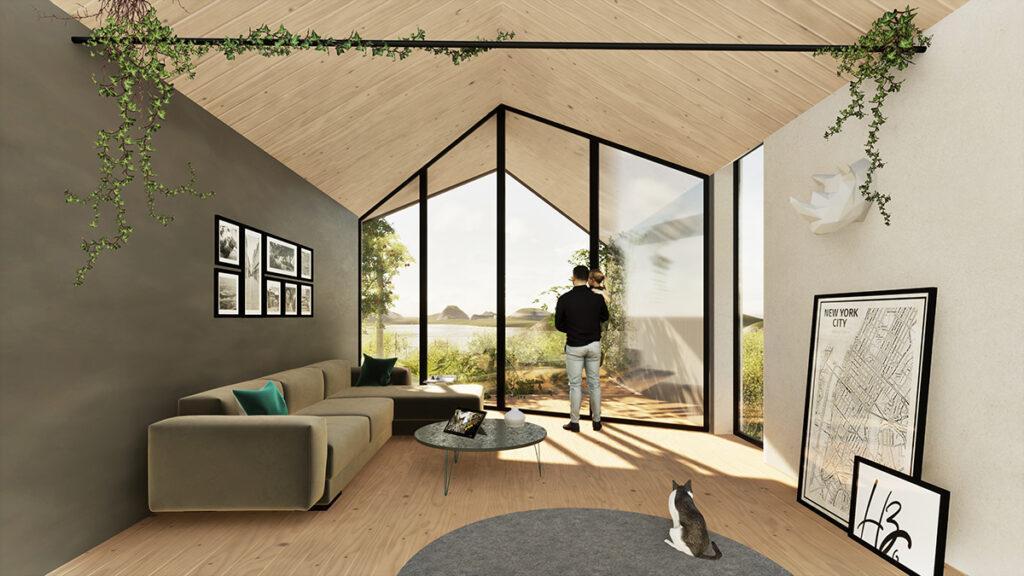
“Bees are social insects. They live together in well-organized communities,” says Santosuosso. He sees it as a tremendous advantage for several generations to live together.
But at the same time:
It is fundamental that inhabitants of all ages feel comfortable, safe and useful to the community.
The new model of residential housing is designed to create a home that delivers on this promise.
Barrier-free and green
The modular honeycomb system meets the needs and expectations of residents. In two-storey residential units, for instance, they can choose between a stairwell and a lift. Ramps and smooth paths replace conventional steps to give barrier-free access. On higher floors, open modules provide space for greenery, where gardens and playgrounds can be enjoyed privately or collectively.
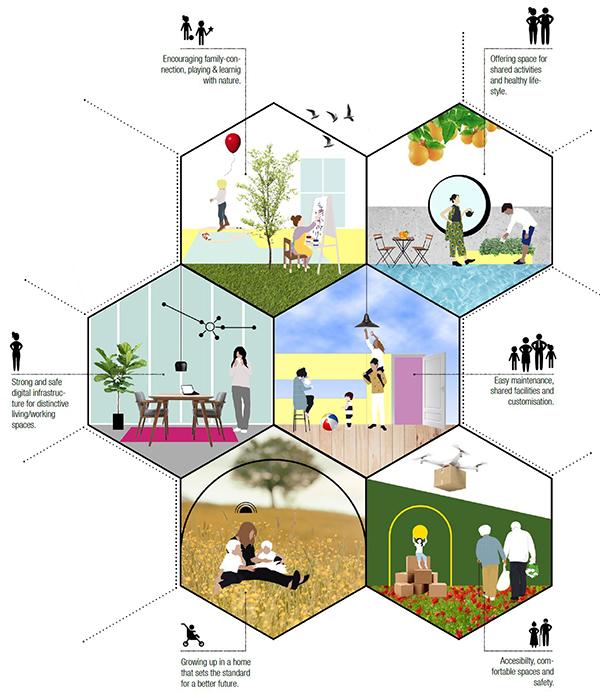
Spacious private terraces offer an ideal opportunity for a chat with neighbours. The mix of private and shared spaces has a dual benefit. It ensures privacy, yet allows residents to socialize with others. Special attention has also been paid to noise reduction, with excellent soundproofing for the modules.
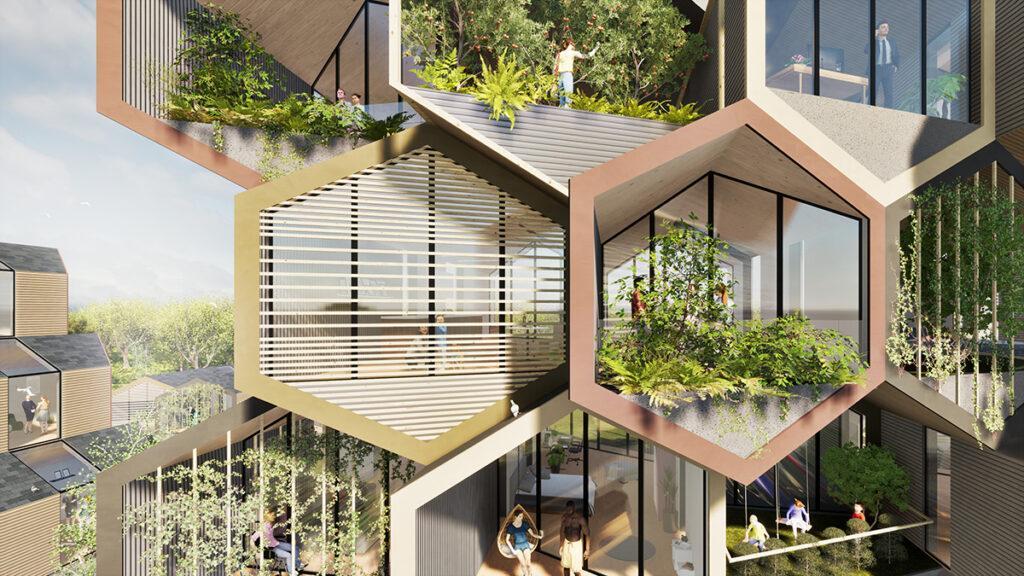
What Santosuosso is aiming for with his proposal for the “Home of 2030” design competition is however more than just a concrete design. He has set out to devise a system rather than a defined solution, providing designers with a concept that can better meet the challenges of the near future.
An international planning team
To achieve this, the architect has assembled a dedicated team of colleagues and specialists. The British firm of Buro Happold and Roman Pomazan from Ukraine have been brought on board. They are joined by Eri Pontikopoulou from the Netherlands, Loris A. Di Benedetto from England, California hemp construction solutions specialist Hempire LTD and community developer Richard Holmes (UK). The team is rounded off by sustainability expert Davide Frati (UK) and Italian wooden construction specialist Marlegno s.r.l..

Social cohesion and regenerating nature are the focus of the project. The concept is more than just a residential model. Indeed, its many modular elements make it a highly intriguing and flexible approach.
A versatile way of living
But it’s not just about using modules to create residential complexes. Buildings that provide shared services are also an important aspect. Separate facilities are planned to supply the community with energy and food, along with e-vehicles for an environmentally friendly transport network. And natural habitats are an important pillar of the innovative system.
Independent and cost effective
The residential model also aims to allow its users to lead self-sufficient lifestyles.
We intend to provide the HIVE with a wide spectrum of co-owned and shared facilities that will empower individuals, families and communities to be self-sufficient.
Moreover, this will reduce the need for public investment by local authorities and administration,
says the architect.
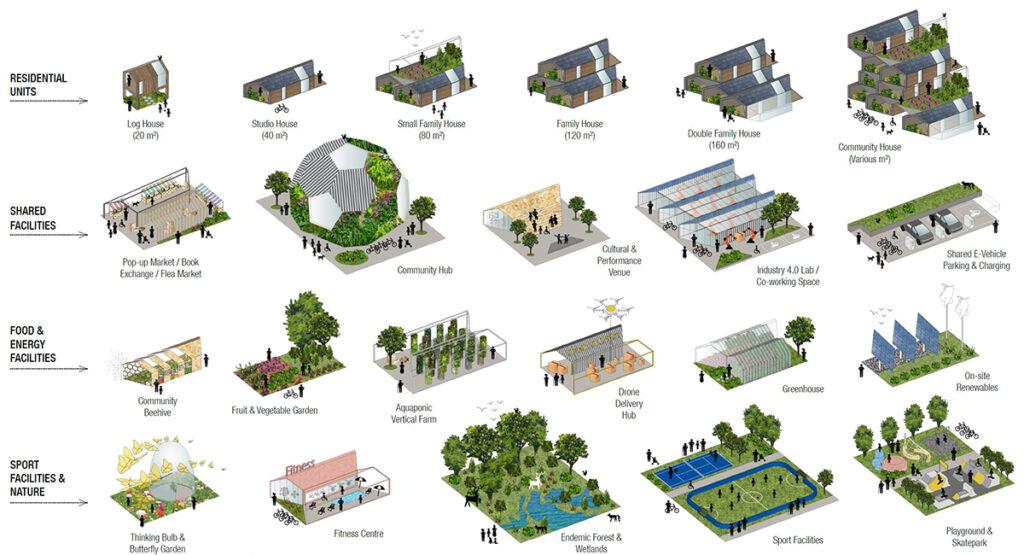
With this residential model, it’s up to the parties involved to decide exactly which elements are suitable for a given location. After all, adds Santosuosso, these decisions should be taken together with future residents right from the initial planning stages. With the component kits designed for HIVE, every installation can become a unique project.
Tailored to real life
Subsequent design phases include conducting spatial analyses and reviewing the actual everyday life of future residents. The results serve to adapt the housing model to the existing conditions. This will allow HIVE developers to promote social interaction and ensure comfort and safety. Of course, the findings will also be used to maximize the amount of space available for healthy activities.
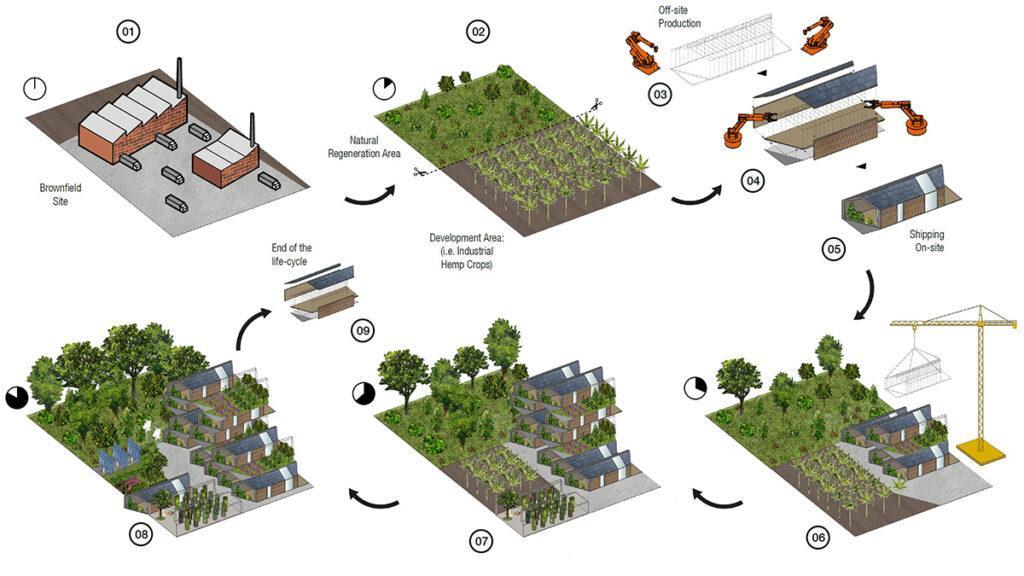
The project is based on the principle of closed loop recycling. Fallow land is identified. And the entire area is divided into zones: one in which nature can recover, and one that defines the “development area”, where industrial hemp is grown during the preparatory stages. The harvest later serves as building material. The wooden frames of the modular system are prefabricated using robot and IoT technologies. This saves time and effort during on-site construction.
Nature recovers during construction
Industrial hemp and natural binding agents are used instead of conventional insulation. This environmentally friendly solution offers optimum moisture control, vapour permeability and sound absorption. And, while nature flourishes in the “recovery zone”, the buildings can be erected.
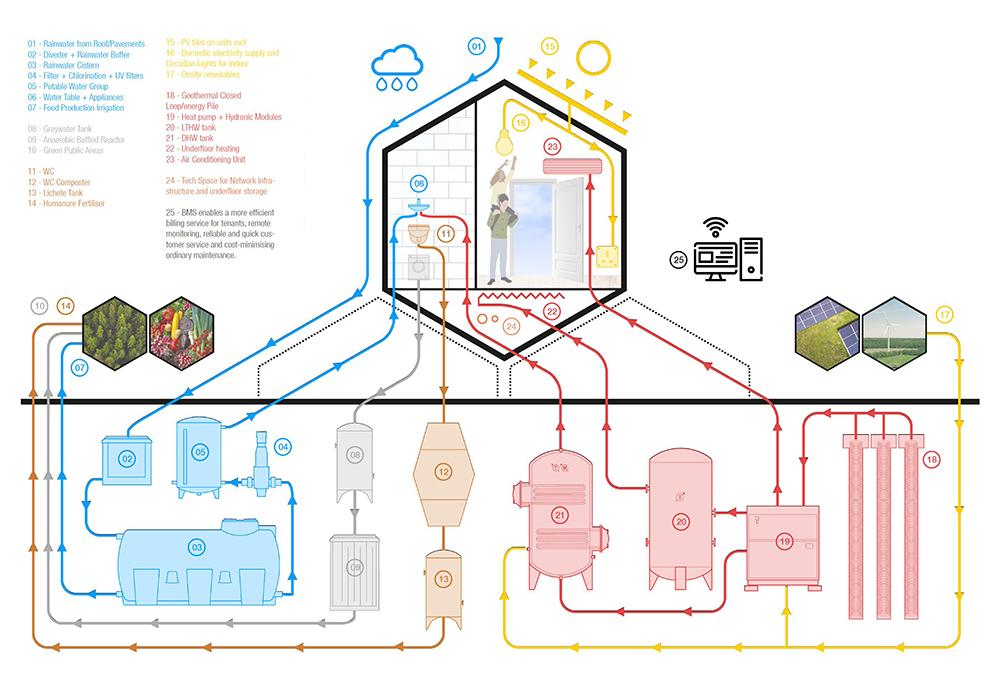
The flexible housing model can be expanded at any time. If components are no longer needed, disposal is no problem. After all, the natural materials are biodegradable. They are simply returned to the cycle as food for nature and plants. The remaining components can be recycled and reused.
Environmental conservation is a top priority
This new socio-ecosystem grows together in a new form of ecology where humans and nature are finally back in balance,
says Santosuosso.
It goes without saying that his residential model takes environmental protection very seriously. Waste, grey water and blackwater are recycled. Rainwater is collected and used. Water-saving fittings and compost toilets help to reduce water consumption.
Clean energy
Solar systems and locally generated renewable energy will supply the community with electricity. Heating, cooling and hot water systems rely on geothermal closed loop piles and heat pumps.
Oriented towards the sun
Furthermore, the model takes the sun’s position into account when planning the ideal orientation of buildings. Preliminary studies help to minimize overheating during summer and maximize energy savings during winter.
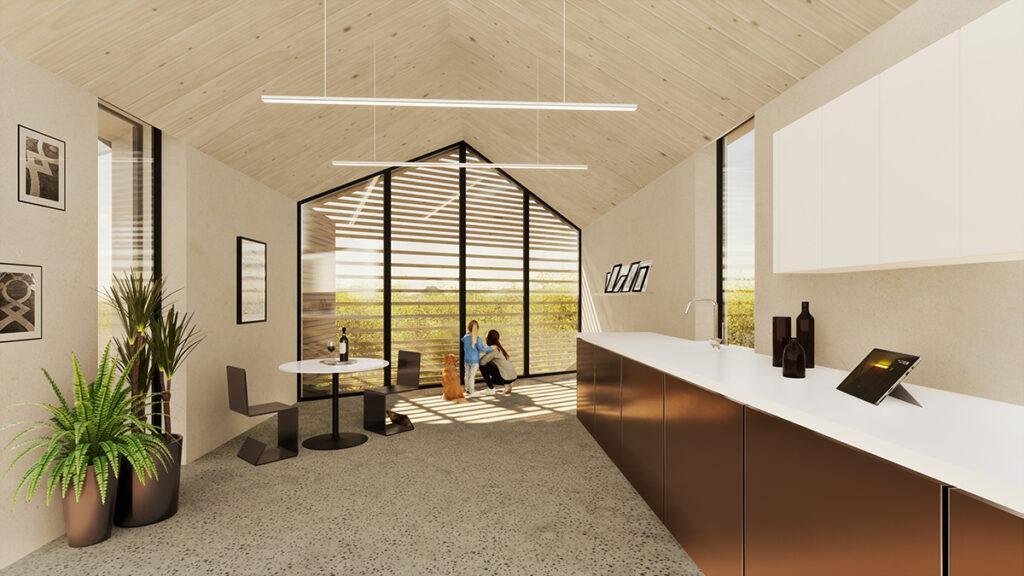
Air quality sensors, mechanical ventilation systems and natural ventilation are also part of the concept. And when it comes to optimal conservation of resources, human innovation comes into play: a computer-based control system allows a smart management of consumption.
Beehive versus skyscraper
The “HIVE Project” may not be as impressively simple as its ingenious natural model, but the beehive inspires a host of exciting ideas for a new type of living environment. And anyone who would feel all at sea in other spectacular visions of the future – such as Bjarke Ingels’ floating city – will probably find Santosuosso’s concept far more appealing.

Text: Elisabeth Schneyder
Translation: Rosemary Bridger-Lippe
Images: Gianluca Santosuosso / “The HIVE Project”


